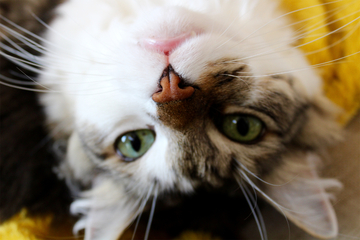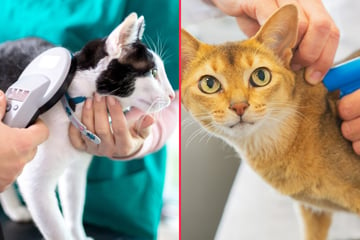Cat harness training: How to put a harness on a cat
There are few things more challenging and risky than trying to put a harness on a cat, but with a little practice, it'll be no trouble at all. Here's how to put a harness on your cat and begin training!
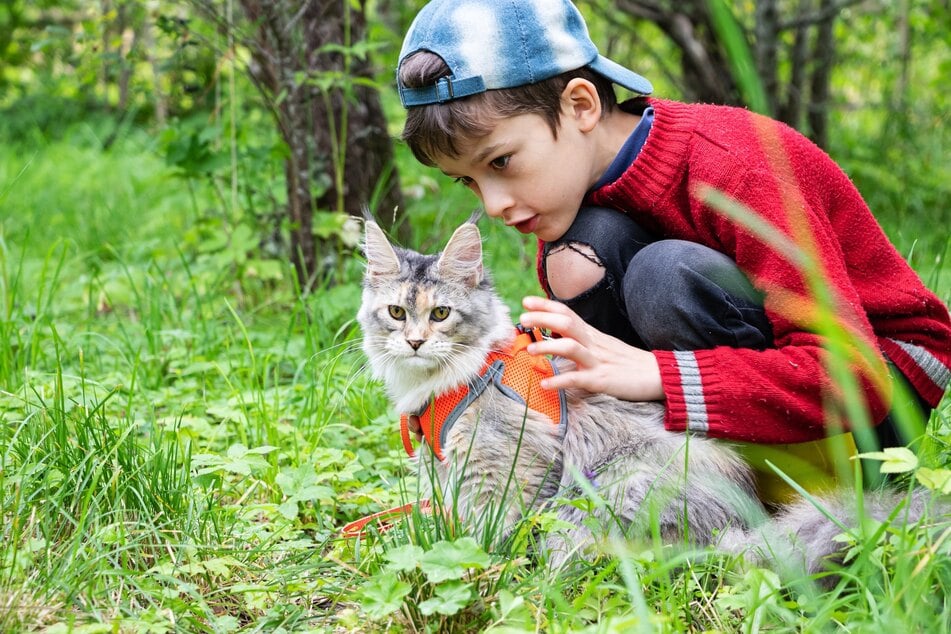
If you have ever considered taking your cat for a walk, you would have had to think about getting it a harness. What's even more difficult, though, is getting the darn thing onto your kitty. After all, cats aren't usually the biggest fans of clothing and are likely to lash out.
In this cat guide, TAG24 will take you through how to put a harness on a cat. Why should you harness train your cat, how do you do it, and what else do you need to know about cat harnesses?
How to put on a cat harness
Putting on a cat harness is not, in itself, a difficult task. It's like putting the booster seat in your car. Once you know what you're doing, it's very straightforward, but the first few times can be a bigger pain in the backside than a hungry kitten. We're here to help make this process as painless as possible!
Here's how to put on your average cat harness
- Step 1: Read the instruction manual.
- Step 2: Put on a really thick pair of gloves.
- Step 3: Position your fluffy fellow in an appropriate position.
- Step 4: Call on a friend or family member to hold your cat steady while you begin the terrifying process.
- Step 5: Drape the harness over your cat's body, making sure that it reaches all around.
- Step 6: Clip the harness in at all appropriate places, taking care not to accidentally pinch your cat or pull on its fur while doing so.
- Step 7: Adjust various straps and components so that they are all in the right place.
- Step 8: Tighten everything so that your cat is comfortable but cannot escape from the harness.
Putting a harness on a cat is like riding a bike: it's very easy once you get used to it, but if you mess up, you'll end up scratched all over. All we can say is: Be careful!
Cat harness training
Before you take your cat on its first harnessed rodeo, you need to get it used to wearing this unique piece of kitty clothing. That means getting your pet harness and leash-trained, of course.
Here's our five-step guide to cat harness training
Step 1: Let your cat explore the harness, taking care that it has only a positive association with it. Keep it close by and make it part of your cat's environment. Maybe lean it up against your kitty sometimes, giving your cat treats when it shows interest.
Step 2: Learn how to put the harness on correctly. This is extremely important, and something that people don't think to do. Read the manual, get advice from the pet shop where you bought the item, and ask your veterinarian.
Step 3: Get someone to help you because, without two people, the first few times will be very difficult. Remember, your cat has teeth and claws and won't understand what's going on. By having someone hold it still while you do the honors, you guarantee your cat's safety as well as your own.
Step 4: After attaching the harness, allow your cat to wander around and do its business while suited-up. This is important as it allows the cat to normalize having the harness on, making it easier to begin leash training.
Step 5: Exercise patience and make gradual changes. You don't want to rush your cat into anything. Instead, relax, take your time, and start from a young age.
Start training your cat from an early age if you're going to walk it on a leash. This is important because cat training gets more and more difficult as your kitty gets older.
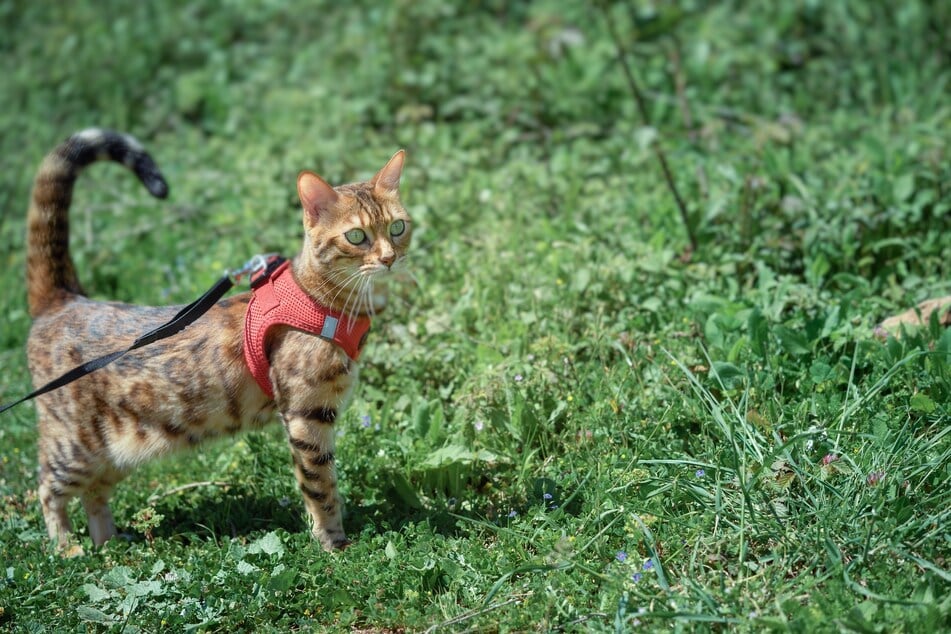
Why use a cat harness
Cat harnesses are essential if you want to walk your cat or take it in the car outside its box. Even the most well-trained cat can get skittish sometimes, so it's always best to be safe.
If you live in a small apartment in the middle of a city, and you want a cat, you might need to consider leash training. This will allow you to give your cat the exercise it needs, as well as a little bit of freedom outside the house. The most important prerequisite for leash training is cat harness training.
Also, if you want to travel around and enjoy life with your cat, but don't want it to be confined to a tiny box during your adventures, a harness can keep it safely secured while in the car. This will mean that it is less cramped, can sleep on the seat, can be attached to the seat belt for better protection, and won't wander over to the driver while they are trying to navigate traffic.
Cat harnesses are all about safety. You want to keep your feline friend healthy, safe, and as happy as can be. Harness training gives you the freedom to provide these things even when living in a cramped living quarters.
Cat harness for walking
Cat harnesses are crucial for walking and should always be used. Kitties can get scared easily and may run away if you let them out of the house without a leash and harness.
Attaching a leash around a cat's neck would be extremely dangerous and could result in strangulation. That's why you should never use a leash without a harness.
Best cat harness
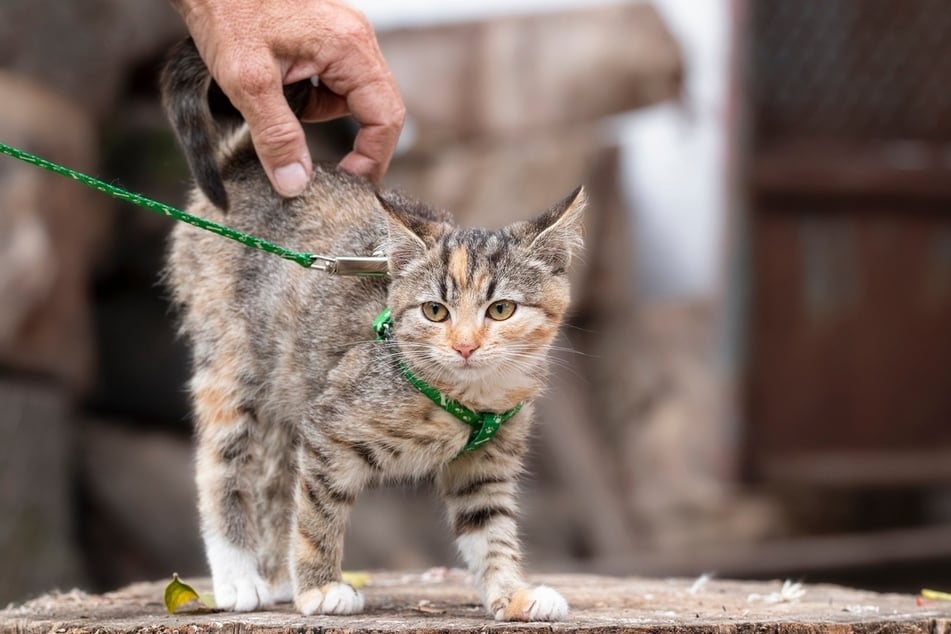
Not every cat harness is exactly the same, but they can be broken down into two categories: a strap harness or a vest. In the end it comes down to comfort; some cats prefer vests while others prefer the freedom and flexibility provided by a strap harness.
It's a good idea to try out a couple of different types and see what your tabby enjoys the most. If it prefers the feel of one over the other, then take that into account when making your decision. After all, you want your kitty to be comfortable, happy, and calm.
Generally, though, strap harnesses will be better for walks, as they give more maneuverability. Meanwhile, a vest will be better for when traveling or in the car because they are more stable and easier to secure.
Can you use a DIY cat harness?
You should always use a store-bought, professional cat harness when walking your beloved kitty. Not only are they stronger and more durable, reducing the risk that your cat will break out, but they're also safer than a DIY job. Overall, it's just not a good idea to cut corners in the cat harness department.
Cats will sometimes struggle to get out of harnesses, and a high-quality product will prevent them from escaping. On top of that, poor-quality or homemade DIY cat harnesses can present risks such as inadvertent strangulation, physical injury, and more.
Remember: not every cat has the temperament needed for walking. If your kitty hates to be walked and is distressed by a harness, don't force things. Instead, talk to your vet and discuss alternative forms of exercise.
Cover photo: 123RF/Izmeda

